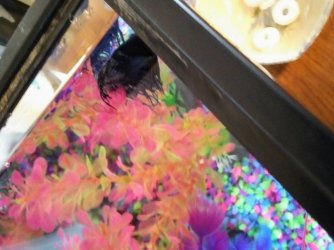First of all, if he is not covered in white spots that look like grains of salt, he does not have ich so you can stop treating him. Ich treatments are strong chemicals and they will stress him.
Secondly, if the betta was put into a brand new tank that had not been cycled first, there will be ammonia and/or nitrite in the water which will be making him sick. You need to be able to test for these.
Fish excrete ammonia. This is toxic to them, it burns their skin and gills. In a cycled tank, there are ammonia eating bacteria which use this ammonia as food. They 'poop' nitrite which is also toxic to fish - it binds to their blood so it can't absorb oxygen. There are more bacteria which eat nitrite and they 'poop' nitrate. This is much less toxic and we need to keep this below 20 ppm.
These bacteria take several weeks to grow, and until there are enough of them to eat all the ammonia made by the fish, and the nitrite made from the ammonia, it is our job to remove them to keep the fish safe. We do this by doing water changes, replacing ammonia and nitrite containing water with fresh water.
If the tank is brand new there will be ammonia building up which will make him ill. After a couple of weeks, ammonia eating bacteria will start to turn ammonia into nitrite, which will then build up and make him ill. His turning grey and hiding away sounds as though he is becoming sick. The best thing you can do is to change three quarters of the tank water every day. Using a water conditioner that detoxifies ammonia will help, though the effect only lasts for 24 hours so you still need to do a water change next day.
Another thing that will help is to put some live plants in the tank. These use ammonia as fertiliser, and floating plants are best for removing ammonia.
But you do need to able to test the water so that you know for sure if there is ammonia and/or nitrite in the tank water, and how much.



